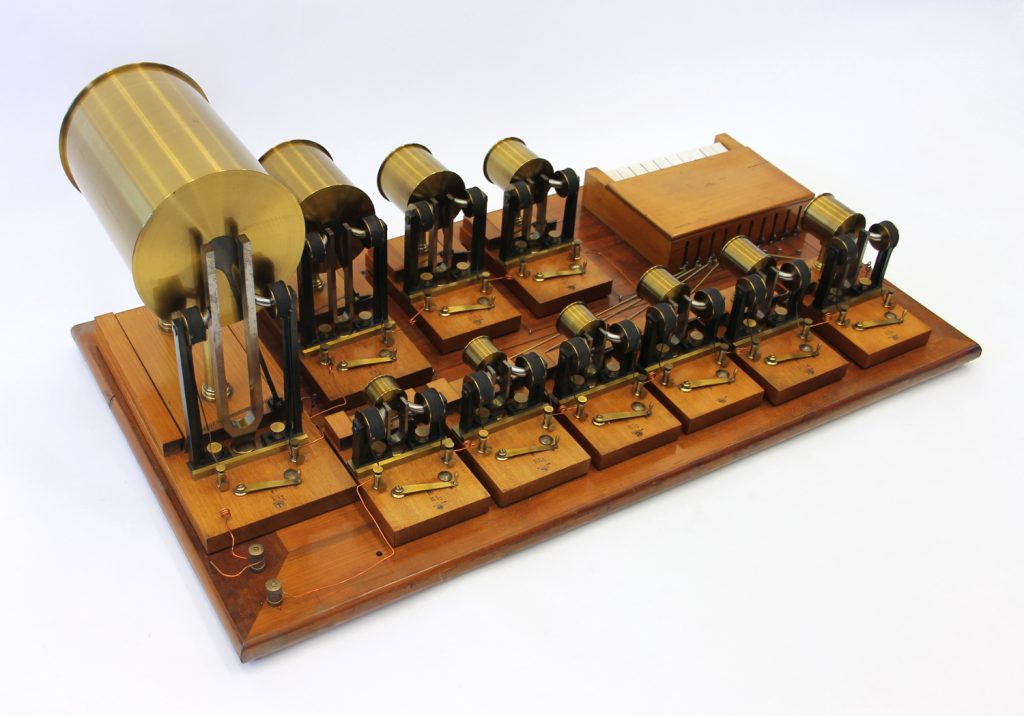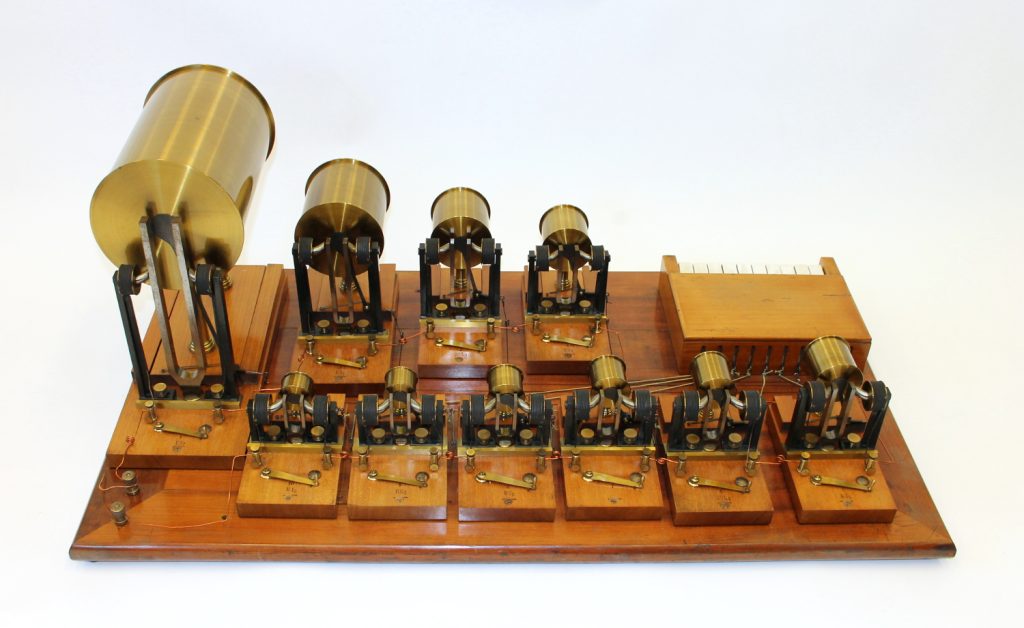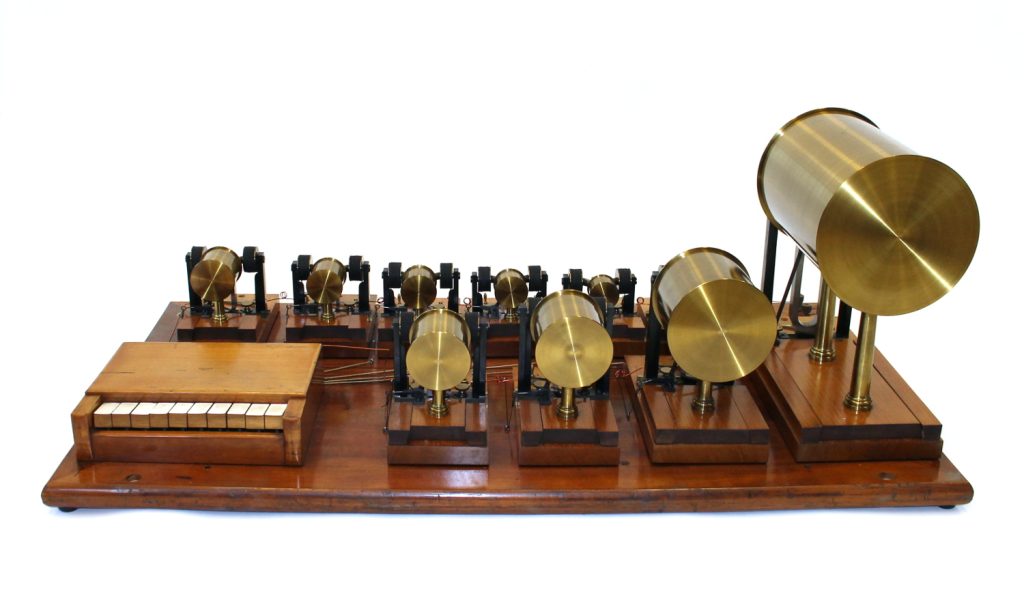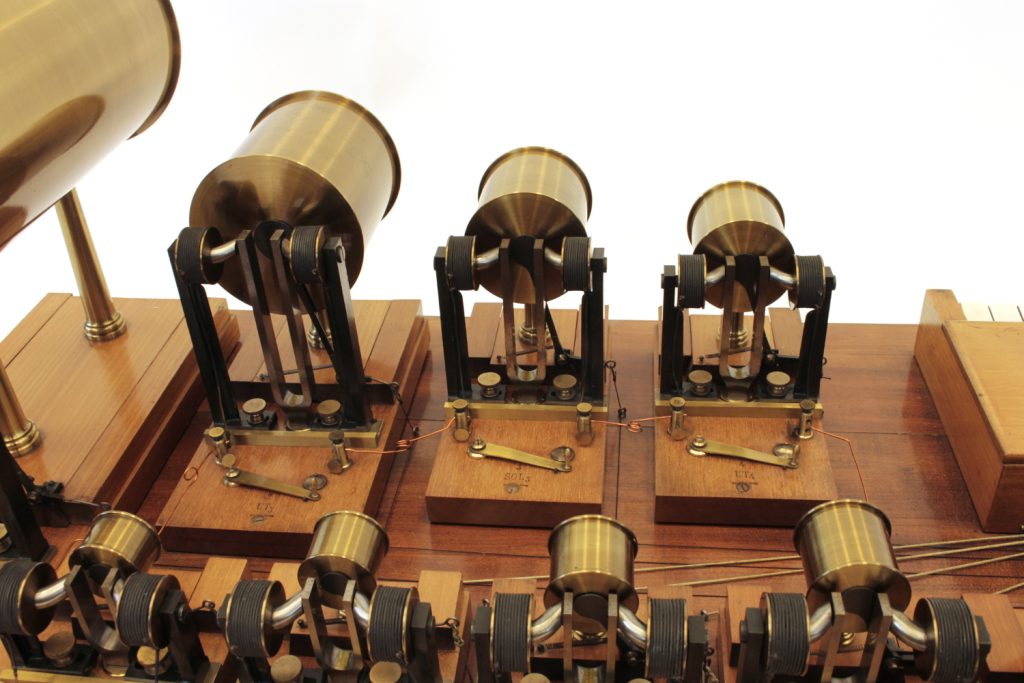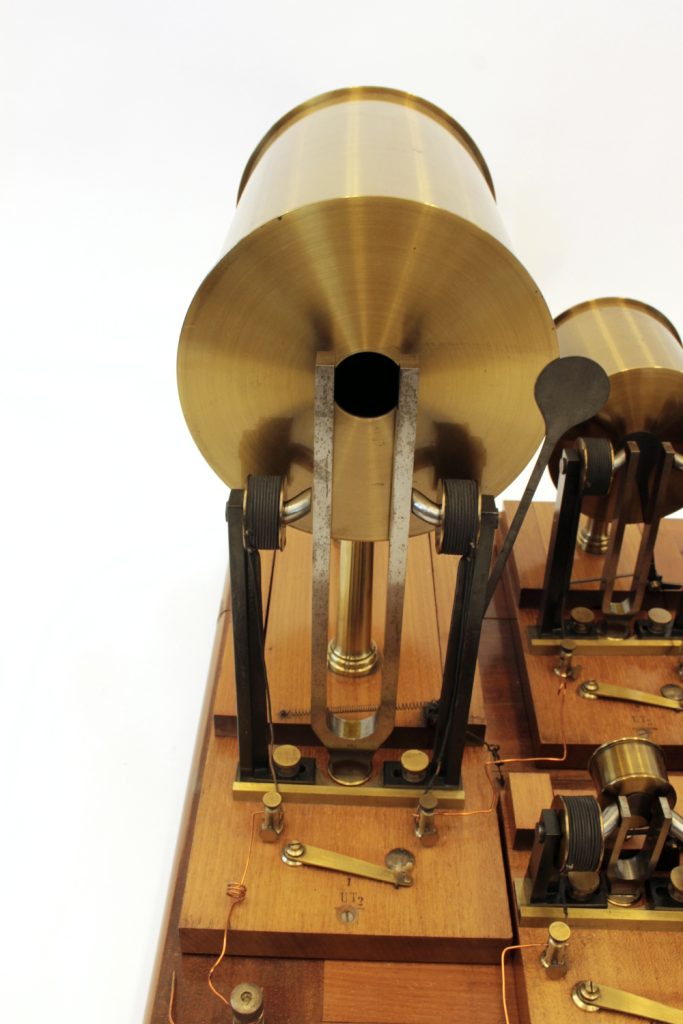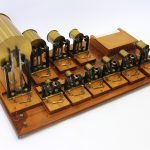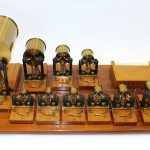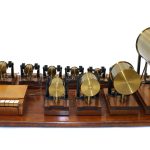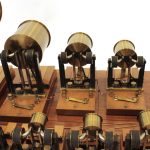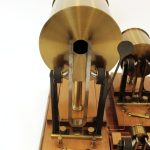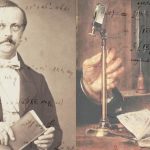Artefacts
Helmholtz Synthesizer
Helmholtz Synthesizer
(Accession Number: 2015.ph.699)
Height = 40cm, Length = 106cm, Width = 59cm
Condition: Excellent. The object shows few signs of use or wear or tear. Some of its strings have been replaced.
The sound synthesiser was Helmholtz’s clearest instrumental expression of his theory of timbre, or sound quality. Whereas his spherical resonators dissected compound sounds (vowels or musical sounds) into elemental frequencies, the synthesiser did this by building up complex sounds from simple frequencies. In 1857 he went to the instrument maker Friedrich Fessel of Cologne to turn this idea into reality. The initial instruments used a combination of electrically driven tuning forks, resonators and piano keys to synthesise compound sounds. When the system was on, all of the forks would vibrate in series. To activate a sound, however, one needed to press an ivory piano which moved a circular lid away from the opening of the resonators thus activating the sound. [Pantalony 2009, 217]
Description: The object consists of a large flat wooden base on which rests ten tuning fork and resonator units connected to a ten-key keyboard. The keyboard has ten ivory plated wooden keys each attached to a string that leads to one of the ten resonator units. Pressing a key causes the string to be pulled, releasing the covering over the resonator opening.
Each resonator unit consists of a flat wooden base of its own holding a steel tuning fork, a brass cylindrical resonator held by a brass stand (the largest resonator is held by two brass stands) on an adjustable wooden base attached to the unit base. A black coated metal paddle covers the opening to the resonator, held in place by a steel spring that causes it to return to its original position covering the resonator opening once the key holding its attached string is released. On either side of the tuning fork are two vertical black-coated metal bars each holding a coil of copper wire with an extended steel piece extending to the bars of the tuning fork. When current is run through the coils, the tuning fork vibrates. These proximity of these black metal bars (and attendant coils and steel pieces) can be adjusted at the base via brass knobs. At the base are two contact points holding the copper wire that runs into the coils.
The copper wire extends through each of the ten units and connects to two nodes on the main wooden base to which current can be added to the instrument. Each resonator unit has an additional small brass handle that has an unknown, but possible dampening effect on the resonator. Each unit also has a label of the unit number (1 through 10) and the resonance/note played by the tuning fork.
Function: The sound synthesizer incorporates spherical resonators that are actuated by electrical tuning forks. A keyboard is used to produce several elemental frequencies simultaneously in order to demonstrate how complex sounds are built up from simple frequencies.
Associated Instruments: Mercury-based Interrupter (2015.ph.714)
Historical notes: The sound synthesiser was Helmholtz’s clearest instrumental expression of his theory of timbre, or sound quality. Whereas his spherical resonators dissected compound sounds (vowels or musical sounds) into elemental frequencies, the synthesiser did this by building up complex sounds from simple frequencies. In 1857 he went to the instrument maker Friedrich Fessel of Cologne to turn this idea into reality. The initial instruments used a combination of electrically driven tuning forks, resonators and piano keys to synthesise compound sounds. When the system was on, all of the forks would vibrate in series. To activate a sound, however, one needed to press an ivory piano which moved a circular lid away from the opening of the resonators thus activating the sound. [Pantalony 2009, 217]
© 2015 – 2025 Humboldt-Universität zu Berlin

